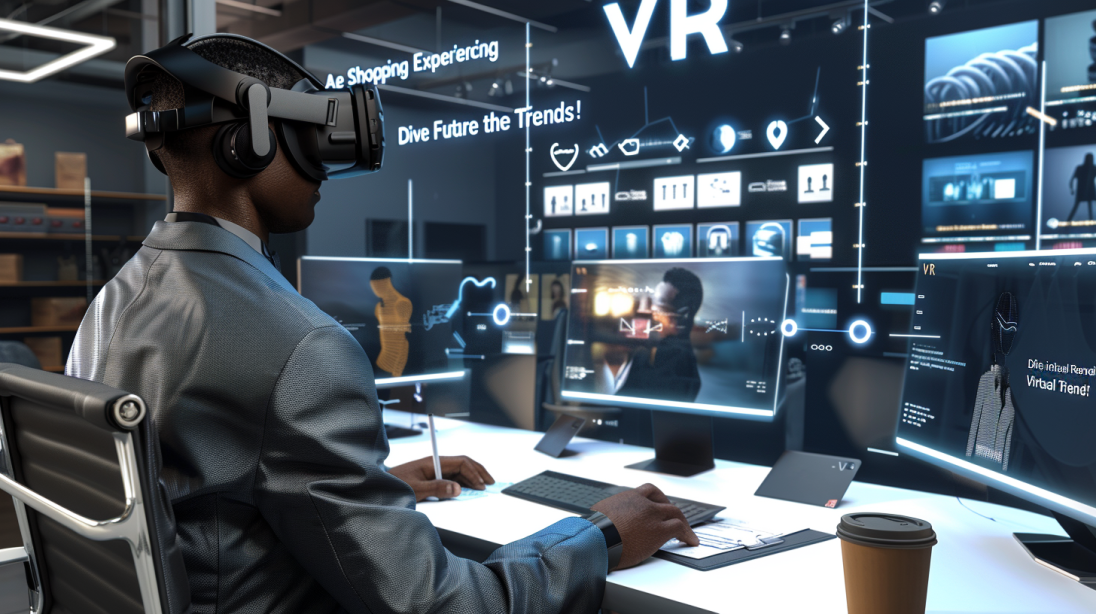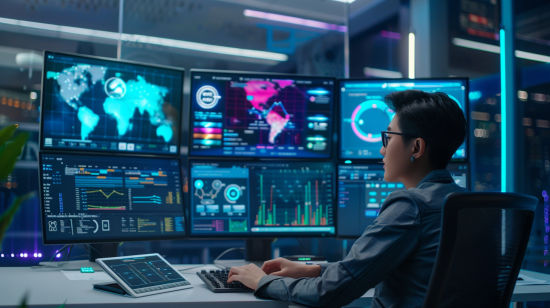Introduction to Virtual Reality in Retail
The retail landscape is undergoing a transformative shift with the advent of Virtual Reality (VR) technology, promising a future where shopping experiences transcend the physical and digital realms. VR shopping experiences offer immersive, interactive environments where consumers can explore products and make purchases in a virtual space. This exploration delves into the emerging trends in VR retail, examining its potential to redefine shopping as we know it.
The Emergence of VR Shopping Platforms
Virtual Storefronts
Innovative retailers are experimenting with VR to create virtual storefronts, where users can navigate through a 3D space, examining products as if they were in a physical store. These virtual spaces range from realistic recreations of physical stores to fantastical environments that could only exist in the digital world.
Interactive Product Demos
VR technology enables interactive product demonstrations, allowing consumers to engage with products in a virtual environment. From trying on clothing and accessories to experiencing the functionality of gadgets and home appliances, VR provides a hands-on shopping experience without the constraints of the physical world.
Enhancing Customer Engagement with VR
Personalized Shopping Experiences
VR retail platforms are leveraging AI and data analytics to offer personalized shopping experiences. By understanding user preferences and behaviors, these platforms can tailor product recommendations and virtual environments to individual users, enhancing engagement and satisfaction.
Social Shopping in Virtual Spaces
VR shopping also introduces the concept of social shopping in virtual spaces, where friends and family can shop together in a virtual environment, regardless of their physical location. This social aspect adds a new dimension to online shopping, combining the convenience of e-commerce with the social experience of shopping with others.
Overcoming Challenges in VR Retail
Accessibility and Adoption
One of the primary challenges facing VR shopping is the accessibility and adoption of VR technology. High costs of VR headsets and the need for powerful computing hardware have limited its widespread adoption. However, advancements in technology and the introduction of more affordable VR solutions are gradually reducing these barriers.
Creating Intuitive User Experiences
Designing intuitive and user-friendly VR shopping experiences is crucial for its success. Retailers must navigate the complexities of virtual interface design, ensuring that navigation, product interaction, and the checkout process are seamless and natural for users.
The Future of VR Shopping
Integration with Omnichannel Strategies
As VR technology matures, its integration with omnichannel retail strategies will become more prevalent. Retailers will leverage VR alongside traditional and online channels, offering a cohesive and immersive brand experience across all platforms.
Expansion Beyond Retail
While currently most prominent in the retail sector, VR shopping experiences have the potential to expand into other industries, from real estate and automotive to travel and entertainment, offering virtual experiences that complement and enhance their physical offerings.
Conclusion: VR Shopping as a Retail Revolution
VR shopping experiences represent a burgeoning trend with the potential to revolutionize the retail industry. By offering immersive, interactive, and personalized shopping environments, VR has the power to enhance customer engagement, transcend geographical limitations, and redefine the shopping experience. As technology advances and becomes more accessible, the adoption of VR in retail is poised to grow, promising an exciting future for virtual retail trends.



